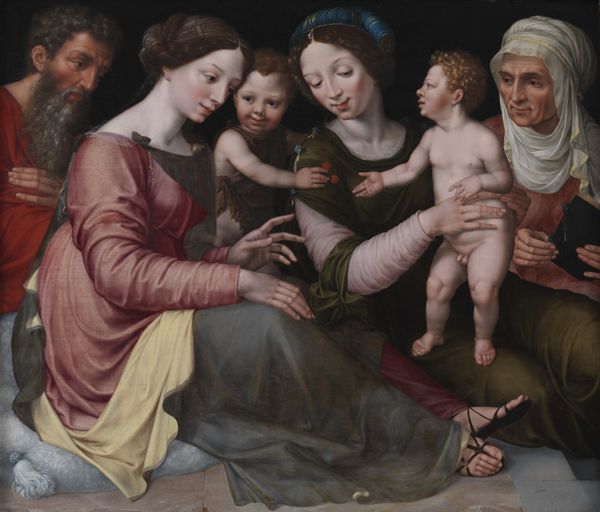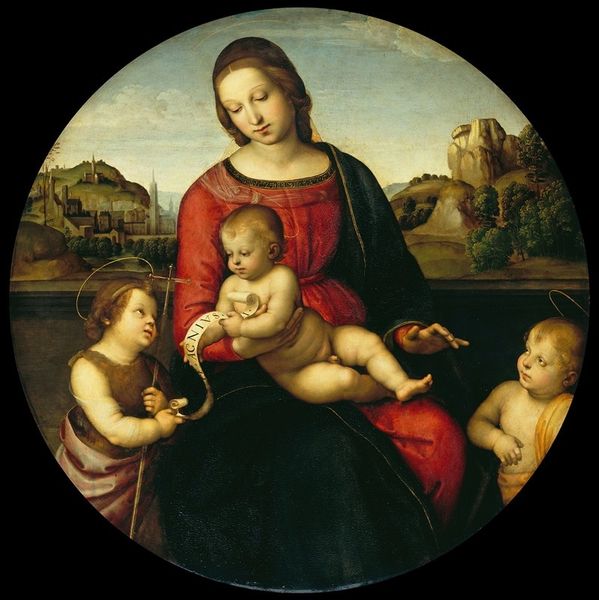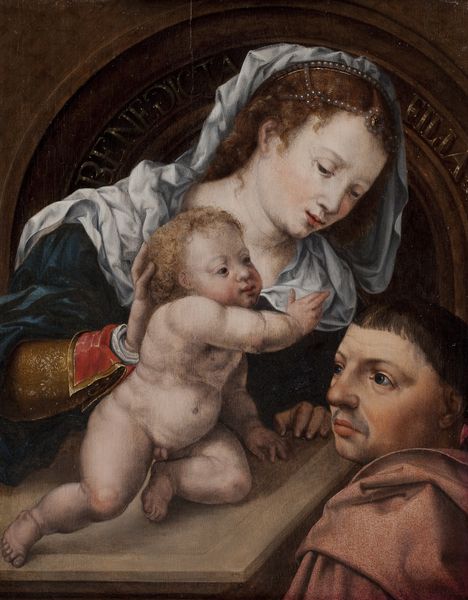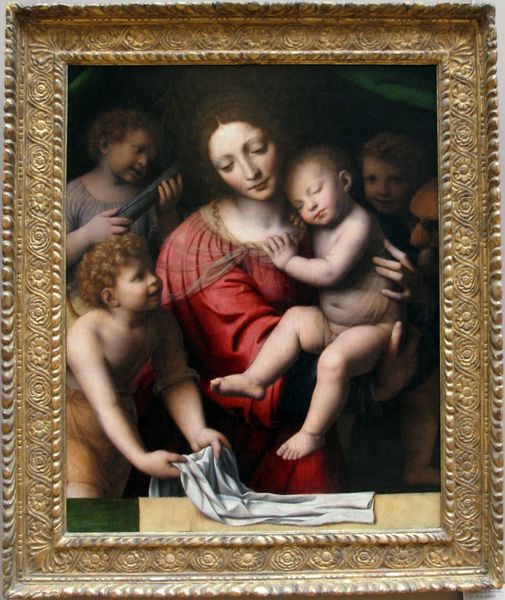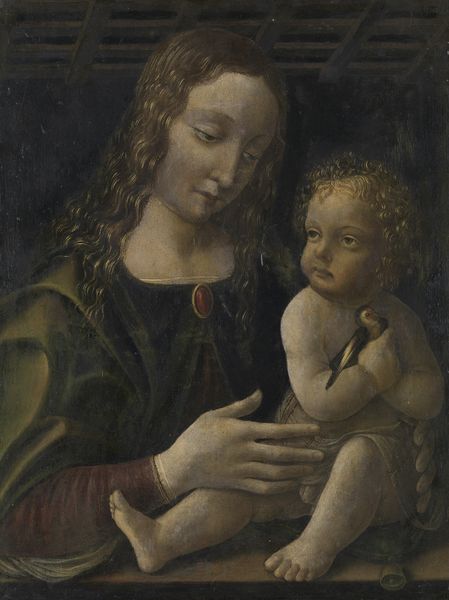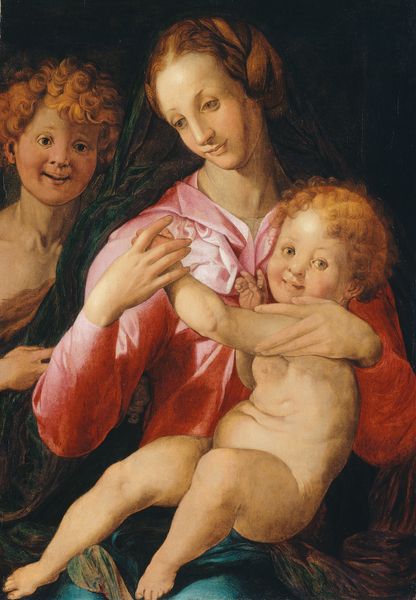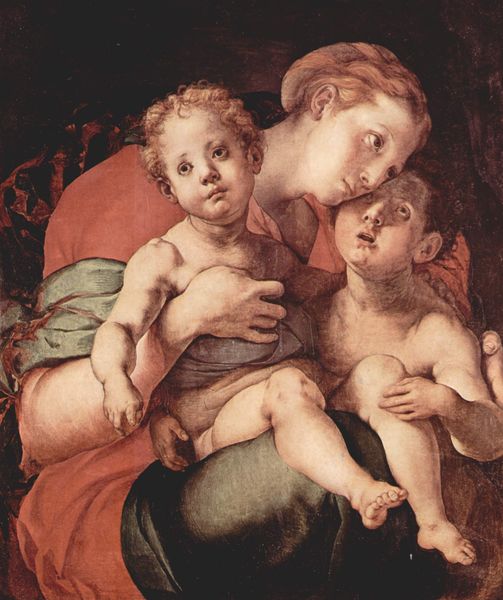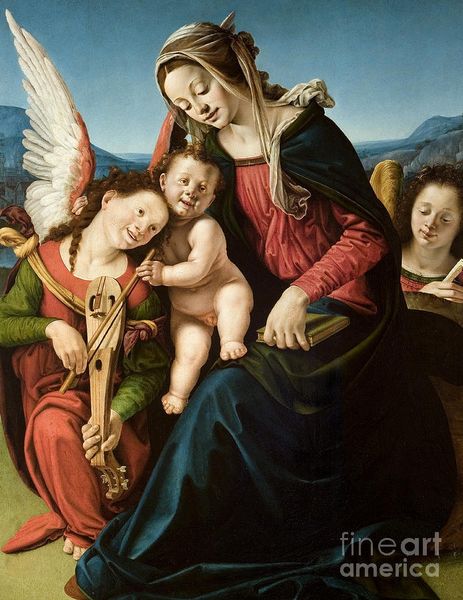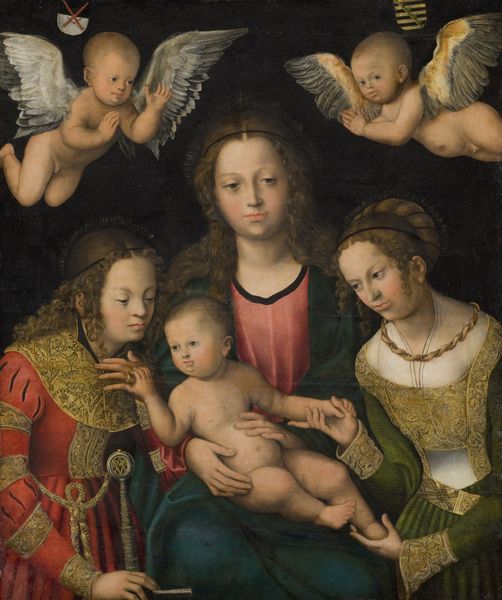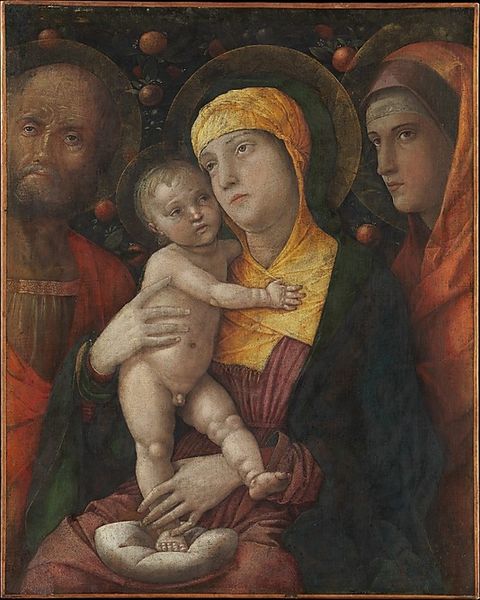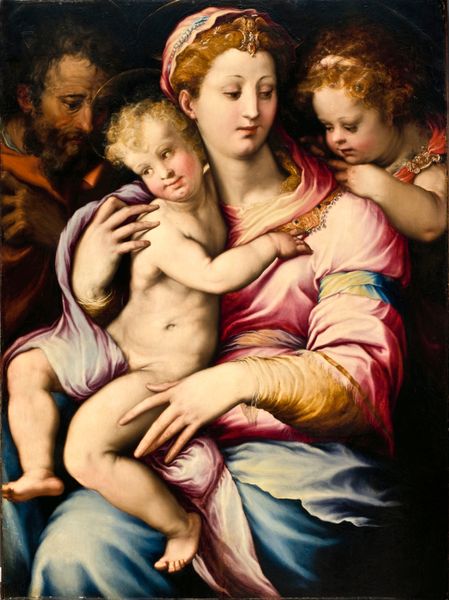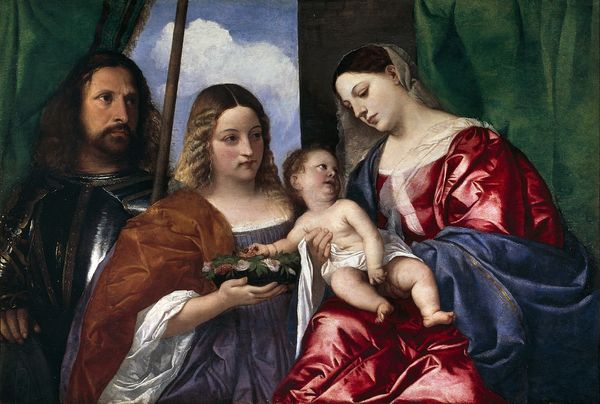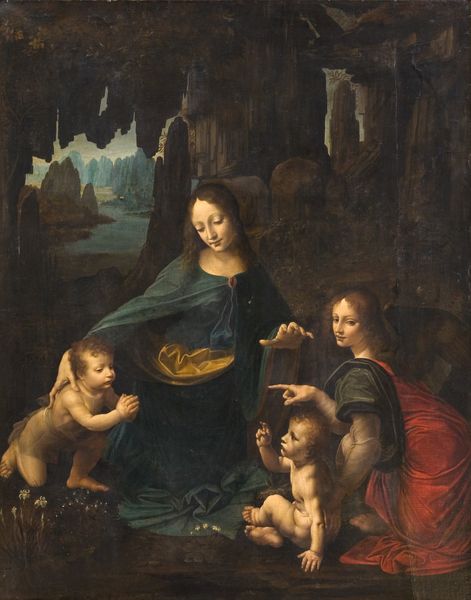
Virgin and Child with the Young Saint John the Baptist, Saint Cecilia, and Angels c. 1505
0:00
0:00
oil-paint
#
portrait
#
oil-paint
#
figuration
#
oil painting
#
italian-renaissance
Dimensions: Diameter: 75 cm
Copyright: Public Domain
Editor: Here we have Piero di Cosimo’s "Virgin and Child with the Young Saint John the Baptist, Saint Cecilia, and Angels," painted around 1505 using oil on panel. It's striking how smooth the paint is; it almost gives the figures a porcelain-like quality. What jumps out to you? Curator: For me, it’s less about the ethereal quality and more about the material reality underpinning that effect. The smoothness you mention is a direct result of the careful layering of oil paint, a relatively new technique at the time, allowing for unparalleled control in blending and detail. How does the patronage structure, requiring the commission of expensive pigments and skilled labor, affect our reading of the divine figures? Editor: That’s fascinating. I hadn't considered the expense of materials influencing how we perceive divinity. Is the round format significant in that regard? Curator: Absolutely. Tondi like this were luxury objects, demanding expert carpentry for the panel itself and a high degree of skill to convincingly fill the circular space. They were destined for wealthy families, meant to display both their piety and their purchasing power. Is it just devotion on display or consumerism, too? Editor: So, it's less a window into a divine scene and more a reflection of earthly wealth through a religious lens. I'm now also curious about the division of labor: who prepared the panel, ground the pigments, or assisted di Cosimo himself? Curator: Precisely. The creation of art involved multiple hands, often unacknowledged. We are left to ask, whose stories are obscured when we focus solely on the master artist? Consider, too, how the oil medium itself became a commodity, traded and valued across Europe. Editor: Thinking about the economics really shifts the meaning for me, beyond just religious iconography to an examination of material culture and artistic production. Thanks. Curator: Exactly, and reflecting on the conditions that make these artworks possible prompts more meaningful reflections of them as products.
Comments
No comments
Be the first to comment and join the conversation on the ultimate creative platform.
